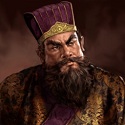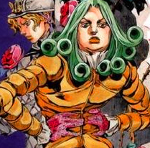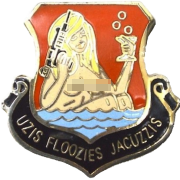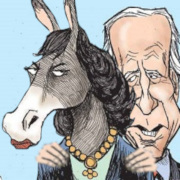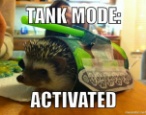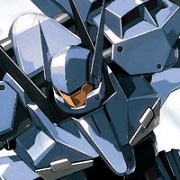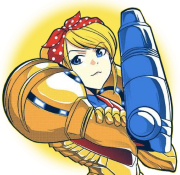|
Wooper posted:"Assault guns" are a myth. Such things did not exist. besides, if they were real assault guns then the army would have a way to just shut the whole thing down
|
|
|
|

|
| # ? May 11, 2024 13:37 |
|
Will this game support the Occulus Rift so I can actually drive my assault gun of choice to Berlin and punch Hitler in the face personally?
|
|
|
|
Zaodai posted:Will this game support the Occulus Rift so I can actually drive my assault gun of choice to Berlin and punch Hitler in the face personally? I have a mental image of an assult gun driving right up to Hitler and a fist popping out of the barrel, punching him right in the schnoz.
|
|
|
|
Guys we've only had 4 or 5 pages on assault guns. I need more.
|
|
|
|
|
Nitrousoxide posted:Guys we've only had 4 or 5 pages on assault guns. I need more. Introduction In internet arguments, it is frequently claimed that the stridsvagn 103 (strv 103, "S-tank") was a defensive tank, or basically a tank destroyer. It was, claims the common wisdom (perpetrated by places like History Channel), meant to dig down in a forest, take a few shots at attacking Soviet tanks and then retreat, using its rear driver to its advantage. Even in the Swedish army, some officers (although mainly ones who had no experience on the tank) thought it was worthless for traditional tank work - that is, offensive tasks. I will show that this is simply not true: the Swedish army set out to figure out how to build a good tank, came up with the S-tank idea, developed and built that idea as a tank, which it then proceeded to use operationally as a tank. The origins of the strv 103, or "alternative S" In 1957, the Swedish army initiated a study of the future of warfare, in order to determine what weapons technology it should pursue during the 1960's (as well as many other things). One of the sub-committees of this study was tasked with studying direct-fire infantry support weapon systems (such as tanks, anti-tank weapons, direct-fire crew-served weapons, etc). The central question that the sub-committee was tasked with answering was: "How should our system for direct fire (both anti-tank and anti-personnel fire) work around 1970 and in the time immediately thereafter?" (1) Additionally, the committee was asked four more specific questions, two of which had to do with tanks. First, it was asked to draw up technical requirements for a new tank to be in service around 1965, and while doing so investigate the appropriate trade-off between firepower, speed and protection - perhaps more than one type of tank would be needed? Second, it was asked to study how tanks were to be integrated into the army organization, keeping in mind the requirement to be able to quickly concentrate strong tank formations that would allow attacking strategically important locations such as a hostile beachhead, and in connection to this recommend a minimum number of tanks required in the entire army. Here, it is already becoming apparent what the army was thinking about tanks. As a part of its work, the committee naturally kept tabs on foreign design trends. It appeared that there were two main schools of tank design thought in the West: one Anglo-American and one French-German one. The Brits and the Americans, the committee found, were intending to develop heavier tanks (around 45 tons - this trend would materialize as the Chieftain and the M60) with more armor, while the Germans and the French were aiming at lighter and faster tanks (around 30 tons, which would materialize as the Leopard I and the AMX-30) - the latter school thought that it would be impossible to combine decent mobility with enough armor to protect against the constantly improving HEAT rounds of the period. For comparison purposes, these hypothetical tanks were designated the "A-tank" and the "T-tank" respectively, where A stood for America and T for Tyskland (the Swedish word for Germany). Additionally, it also studied a newly invented Swedish concept (patented in 1956 by an engineer at the Army Ordnance Administration, Sven Berge), consistently enough named the "S-tank". The S-tank concept lacked a turret and had a two-man or possibly even one-man crew, and because of this it could be designed with extremely well sloped front armor which would protect against the kinetic armor-piercing rounds of the period. The turretless design also allowed for a standoff screen in the front of the tank for protection against HEAT rounds. In short, it could potentially offer the protection of the A-tank with the same low weight and power-to-weight ratio as the T-tank - and low weight was considered important for strategic mobility reasons (easier to find railroad cars that could transport the tank and bridges that could support its weight). After conducting a number of sub-studies (on things like the probability of victory in hypothetical duels between the three alternatives above, the effects of nuclear radiation on tank crews, the development of IR night vision devices, and war games involving tank assaults into beachheads) the committee delivered its report in May 1958. In regards to tanks, it recommended that development should be a started on a well armored tank much like the A-tank, and that development in the UK and the US should be monitored and the possibility of buying a design from either country be kept open. However, the committee also found that "alternative S" was interesting enough to merit further study, and recommended that some feasibility trials be conducted, at a limited scale. Furthermore the committee also found that newer, better tanks should be organized into armored brigades capable of attacking an opponent in open terrain, while older tanks should be assigned to direct infantry support only, in anti-tank companies in the infantry brigades. It is already apparent where we're heading: the army concluded it needed a tank for its armored brigades, and the role of the armored brigades was an offensive one - counterattacking a beachhead being the typical example of an operation such a brigade might carry out. The S-tank was conceived as an offensive weapon, considered equal in role and performance to the foreign tanks then in development. The development process As the committee recommended, so were it to be, and initial work on some S-tank test rigs was contracted to Bofors in 1958. The development at this early stage was focused on a 30-ton two-man tank with a conventionally elevating gun, fed by an autoloader using two-piece ammunition (the "A-tank" proposal that was under development at the same time was to use the same gun and ammunition). By March 1959, however, the army had changed its mind, for several reasons. Experiments with two-man crews in other armored vehicles at the Armored Forces School had found that just driving, spotting and firing was so taxing on the crew that it left no mental resources over to manage communication with the rest of the unit, especially not if the commander also had to handle a secondary weapon, such as a machine gun or an autocannon. Consulting German war veterans at the West German armor school in Munster about their experiences pointed in the same direction: two men simply weren't enough, especially not with the complex radio equipment in use in the late 50's. Autoloaders were not entirely trusted either; it seemed like it would be a good idea to have someone who could monitor it and fix potential jams. A third crew member was necessary, and finding space for him would increase the weight of the tank. However, it seemed that this could be solved by returning to Sven Berge's original gun elevation idea, more or less as envisioned in his 1956 patent. By fixing the gun in the chassis in the vertical axis too and instead elevating by moving the road wheels, the autoloader mechanism could be moved to the rear of the tank, where the would also be room for the third man. From there, the step to giving him too a set of controls was not big - reversing in a tank is ordinarily quite difficult and usually involves a guide on the outside of the vehicle since the driver has zero visibility to the rear - and thus the rear driver/radioman was in place. (2) The various trials were mainly positive - the concept was found to be workable in practice, and the A-tank development was put on hold. A prototype series of 10 S-tanks was ordered in 1960 - the positives seemed to by far outweigh the negatives already at this point, but further studies were conducted. In 1961, the Armored Forces School investigated the possible downsides of a lack of gun stabilization and an inability to engage targets that were not directly in front of the tank. The study stated that at the time, even in tanks with stabilization, firing on the move at distances greater than 500 meters was mostly a waste of ammunition. Even at shorter ranges only big targets (i.e. tanks) were to be fired at on the move. According to the study, the main benefit of stabilization was taking 2-3 seconds off of the time between stopping and opening fire. With this in mind, as well as the fact that in the S-tank it would be possible for the commander to take over control and show the gunner/driver a spotted target, it is easy to see why the study concluded that it could not see why the S-tank would be inferior in reaction time to a turreted tank. The ability to easily and quickly retreat with the front armor towards the enemy (thanks to the rear driver) was also considered an advantage. (3) By 1961, the army HQ was calling for at least 200 new tanks, preferably with deliveries starting in 1965. The debate regarding which tank to buy would continue into 1962 - the S-tank was compared to both other Western tanks of the time and estimates of the Soviet adversary tanks in a number of simulations and paper wargames. The conclusion was that while the Chieftain was good, the S-tank was better - it was estimated to have very similar protection but was much lighter and presented a smaller target. (4) Stridsvagn 103 in service As demonstrated above, the strv 103 was developed with the same kind of requirements as a turreted tank. It should hopefully not come as a surprise that when it was taken into service in the armored brigades, it filled the exact same role as a turreted tank. In the 1970's, the Swedish army's modern tanks (the strv 103 and the Centurion) were organized in seven armored brigades, plus a few independent mechanized battalions. The armored brigades was the army's spearhead - there were dozens of infantry brigades, but the few armored ones were the ones that could really conduct an offensive operation in depth against a mechanized enemy. If you take a look at a map, you might be wondering where the Swedish army imagined it was going to conduct a mechanized offensive - while most of the country was east of the Iron Curtain, it was entirely surrounded by water and friendly countries, and the army had no landing craft capable of crossing the Baltic sea. Of course, the answer is the one that was hinted at above: the armored brigades were for counter-attacking beachheads, airborne landings or even an enemy that had established a foothold in the country. The infantry brigades were well suited to defending and delaying, but were only really capable of attacking in what was termed "covered terrain" (i.e. mostly forests and urban areas). Open country was tank country, and consequently the armored brigades had their initial positions in strategically important open areas. Three of the seven armored brigades had their initial positions in the provinces of Skåne and Blekinge, at the very southern tip of the country - mostly flat and open terrain, and only a few hours from East Germany and Poland by ship. One was stationed on the island of Gotland (also flat and open terrain, and not a big island at all), two in the densely populated and strategically important Stockholm and lake Mälaren area (one in Strängnäs, south of the lake, and one in Enköping, north of the lake) and finally one in Skövde on the big plains in the southwestern part of the country where a lot of important air force bases were located, and where it could easily reach the important harbor in Gothenburg. (5) In the 1970's, two of the brigades in Skåne and the one in Skövde were equipped with strv 103's; the rest had Centurions. Strategically, it didn't matter which tank the brigade had - it was expected to fill the same role and had almost exactly the same organization and equipment (other than the tanks themselves). Tactically, there were a few differences, but they weren't huge. The same field manuals were used for both Centurion and strv 103 formations down to platoon level (one platoon was three tanks) - only the field manual intended for individual tank crews differed. The tank gunnery field manual from 1974 (which was also the same for both Centurions and strv 103's), only a few very specific points called attention to the difference in tactical usage between the two. More specifically: the manual stated that firing on the move was to be avoided, even in a tank with gun stabilization like the Centurion. In a Centurion, firing on the move was permitted at distances up to 800 meters, and it was only to be done if there was a very good reason for doing it - one example given was to attempt to suppress an ATGM crew that had just fired before it could reload. In the strv 103, firing on the move was only permitted at distances up to 200 meters, which is basically knife fighting range in a tank. Instead, the field manual heavily emphasized the need to get the first hit in. Firing first and hitting with the first round fired was an enormous advantage, and in big bold letters the manual stated that in tank duels, the tank that got the first hit was four times more likely to win than the tank that didn't. Furthermore, the manual went on to say that the enemy was expected to have many more AFV's than the Swedish side could expect to have, and wasting ammunition was not acceptable. In other words, the gunnery doctrine was firmly centered on well-aimed fire and hitting with the first round. The strv 103's inability to fire on the move was no big disadvantage in light of this. (6) Conclusion The stridsvagn 103 was conceived as a tank, developed in response to a demand for a tank, and used as a tank. It was not a tank destroyer or a "defensive" vehicle. Repeated trials both in Sweden and abroad showed that in most cases it was insignificantly slower to react to a target appearing on its side than a turreted tank was. In fact, due to its duplicated controls (the commander could override the gunner/driver's controls and, for example, point the tank at a target that he could see through his rotating cupola but the gunner/driver hadn't spotted) it could even be faster to react than a turreted tank without similar functionality - the turreted tank's commander would have to talk the gunner into finding the target. The inability to fire on the move was not considered a significant disadvantage considering the Swedish gunnery doctrine at the time. The strv 103 proved to be an evolutionary dead end, however. Stabilization technology improved rapidly during the 1970's, especially with the introduction of gun-follows-sight technology, and the next generation of Western MBT's that appeared around 1980 were only slightly less accurate on the move than they were at a standstill. The heavily sloped but not all that thick front armor which offered good protection against 1960's armor-piercing rounds was completely insufficient against newer 1970's "long rod" penetrators. It was a very innovative and very Swedish think-outside-the-box solution in 1960, but it should have been replaced around 1980-1985 - the original requirements called for a technical lifetime of 15 years. Footnotes 1. Rapport (maj 1958) från studiegrupp 2 för fortsatt tygmaterielplanering. (Krigsarkivet: Kungl. Armétygförvaltningen (KATF), Fordonsavdelningen, Centralsektionens hemliga arkiv, serie F III, volym 1) 2. Hemlig promemoria "Viss ändring i fodringarna på strv typ S", diarienr KATF/FB:AH 100:5, 20/3 1959. (Krigsarkivet: KATF, Fordonsavdelningen, Centralsektionens hemliga arkiv, serie F I, vol 32) 3. Hemlig skrivelse, diarienr C PS H 503, 10/10 1961. (Krigsarkivet: Pansartruppskolan, Försöksavdelningens hemliga arkiv, serie F II, volym 2) 4. Hemlig skrivelse "Anskaffning av ny huvudstridsvagn", diarienr FAH 1010:10, 28/11 1961. (Krigsarkivet: KATF, Fordonsavdelningen, Centralsektionens hemliga arkiv, serie F I, volym 53) 5. Bengt Wallerfelt: Si vis pacem - para bellum : svensk säkerhetspolitik och krigsplanering 1945-1975 (Stockholm: Probus, 1999) 6. This paragraph is based on a number of period field manuals and TO&E's, see f.ex. Arméhandbok del 1 - organisation: pansarbrigadens förband (1977), Pansarreglemente pansarbataljon (1966), Pansarreglemente stridsvagnskompani (1974), Pansarreglemente stridsvagnspluton (1974) and Skjutreglemente för armén: Stridsvagn grunder (1979). Some of them are available in scanned form.
|
|
|
|
aw, c'mon, you left out the best part.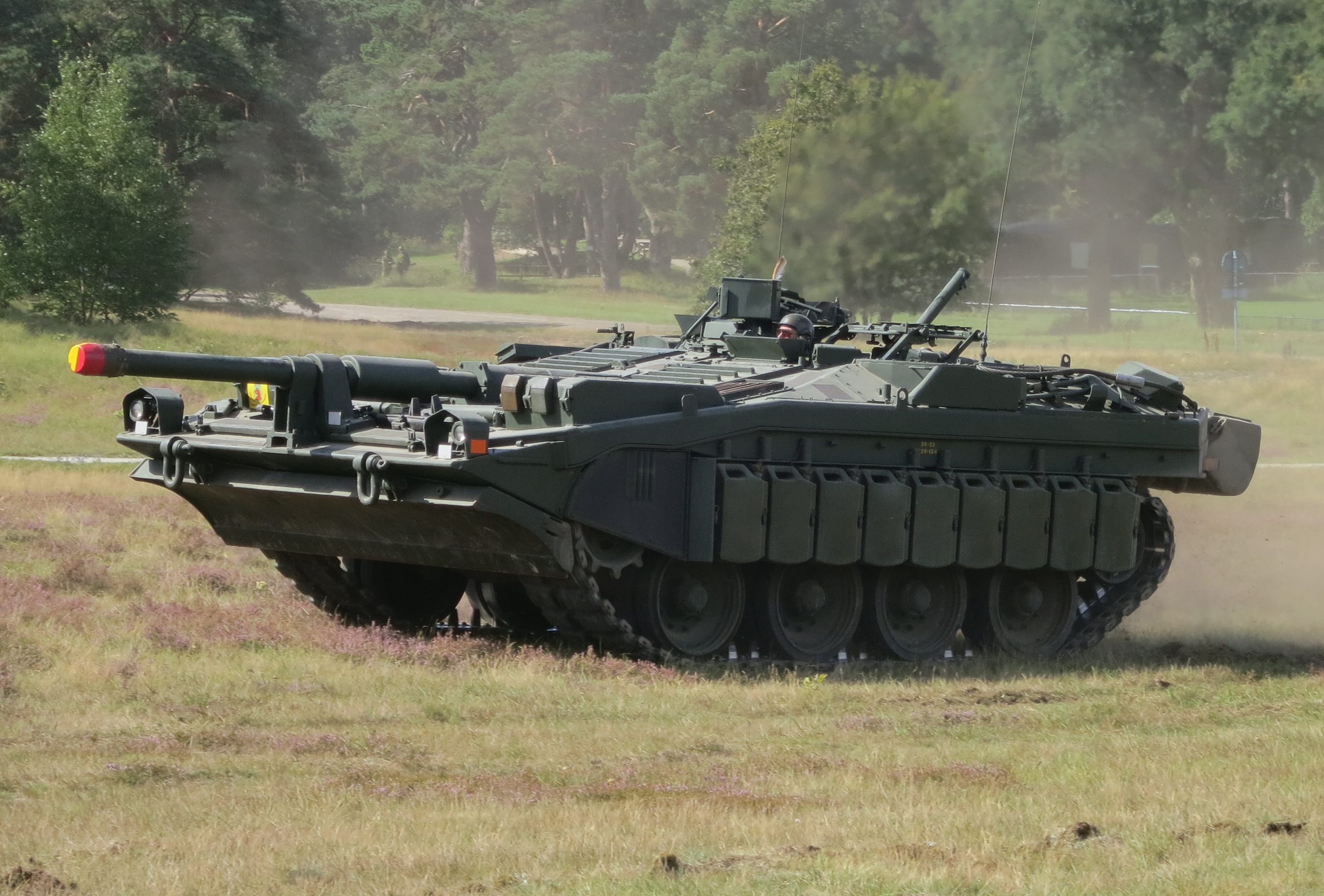  look at this thing. look at this ridiculous tank
|
|
|
|
PleasingFungus posted:
huh, so that's where landmasters come from
|
|
|
|
Wooper posted:"Assault guns" are a myth. Such things did not exist. Assault guns are just tanks painted black.
|
|
|
|
I think I'm going to create an hoi4 version of the Endonym Empire mod for eu4 - Does anyone know if the game map is capable of displaying non-latin characters?
|
|
|
|
Just because the tank has a folding stock or a bayonet mount does not make it inherently more deadly
|
|
|
|
TheFluff posted:here you go PleasingFungus posted:aw, c'mon, you left out the best part. This owns
|
|
|
|
it's probably my second-favorite tank, after the lee. look at this goofy-rear end mess of a machine
|
|
|
|
Wooper posted:"Assault guns" are a myth. Such things did not exist. and now we know why they were so useless in the invasion of russia.
|
|
|
|
 I lust for tankette mods. Oh god, and that flame thrower tank the Germans made that had to carry a highly impractical trailer. I really do hope they do DLC that is just the goofiest but still real poo poo that happened. I'm sure there was a prototype vtol plane that couldn't land practically, near the end of the war.
|
|
|
|
walgreenslatino posted:Just because the tank has a folding stock or a bayonet mount does not make it inherently more deadly You take that back
|
|
|
|
PleasingFungus posted:it's probably my second-favorite tank, after the lee. God bless American WW2 tank design. Anything but a regular turret if you don't mind.
|
|
|
|
PleasingFungus posted:it's probably my second-favorite tank, after the lee. Aren't these things horrible lovely death traps?
|
|
|
|
As opposed to what American tank from that era?
|
|
|
|
Crash74 posted:Aren't these things horrible lovely death traps? The russians called it "a grave for six brothers"
|
|
|
|
Orv posted:As opposed to what American tank from that era? I thought that when the Sherman came out it wasn't bad?
|
|
|
|
The Lee was America's "oh geez now we're at war!" tank and it wasn't great, but you'd be hard pressed to find a particularly good one at the time. The Sherman came a little later. The first Sherman was a death trap because the US didn't figure out how to make their tanks not catch on fire when you hit them in the ammo compartment yet, but then they hotfixed that and it was one of the, if not best, greatest tanks around. Then the Germans threw more metal on their tanks and were all "ha ha can't penetrate me now, fucker!" but the Americans hotfixed that, too, by making a new turret with MORE GUN.
|
|
|
|
|
PleasingFungus posted:aw, c'mon, you left out the best part. Wait, is this what you nerds are talking about when you say "assault guns"? Every time the words are brought up my eyes glaze over and I skip the post, but I was pretty sure you guys were bitching about those shooty things you hold that Obama wants to steal from your cold dead hands.
|
|
|
|
My favorite early WWII tank is the two-turret variation of the Polish 7TP: I don't care about whether it actually worked or not, I just want to believe that one turret operator always tells the truth and the other one always tells a lie.
|
|
|
|
ExtraNoise posted:Wait, is this what you nerds are talking about when you say "assault guns"? Every time the words are brought up my eyes glaze over and I skip the post, but I was pretty sure you guys were bitching about those shooty things you hold that Obama wants to steal from your cold dead hands. Didn't you read that post? That is a tank, not an assault gun. 
|
|
|
|
Gamerofthegame posted:The first Sherman was a death trap because the US didn't figure out how to make their tanks not catch on fire when you hit them in the ammo compartment yet lol no, get out.
|
|
|
|
The interesting thing about the sherman is it never got a reputation for burning easily among the russians because as it turns out it burned less frequently than the t34. Most russian designs had worse ammo storage than even american tanks due to their tight design and often had ammo just rolling around on the turret floor. Also any time I see a tank with rivets it reminds me of this story about an Italian tank and a non-penetrating hit that snapped off a bunch of rivets and they killed a crewman while they were bouncing around the cabin. I wonder if other armies had that problem.
|
|
|
|
dtkozl posted:The interesting thing about the sherman is it never got a reputation for burning easily among the russians because as it turns out it burned less frequently than the t34. Most russian designs had worse ammo storage than even american tanks due to their tight design and often had ammo just rolling around on the turret floor. No, because other armies didn't make their tanks as lovely as the Italians
|
|
|
|
Phi230 posted:No, because other armies didn't make their tanks as lovely as the Italians Japan built a tank with the gun pointing the wrong way.
|
|
|
|
dtkozl posted:Japan built a tank with the gun pointing the wrong way. Japan and Italy had the worst tanks ever it is known
|
|
|
|
ExtraNoise posted:Wait, is this what you nerds are talking about when you say "assault guns"? Every time the words are brought up my eyes glaze over and I skip the post, but I was pretty sure you guys were bitching about those shooty things you hold that Obama wants to steal from your cold dead hands. Yeah they are self-propelled guns with lots of armour. Gun being another name for a big cannon. They are basically tanks without rotating turrets. German StuG III  Russian SU-76 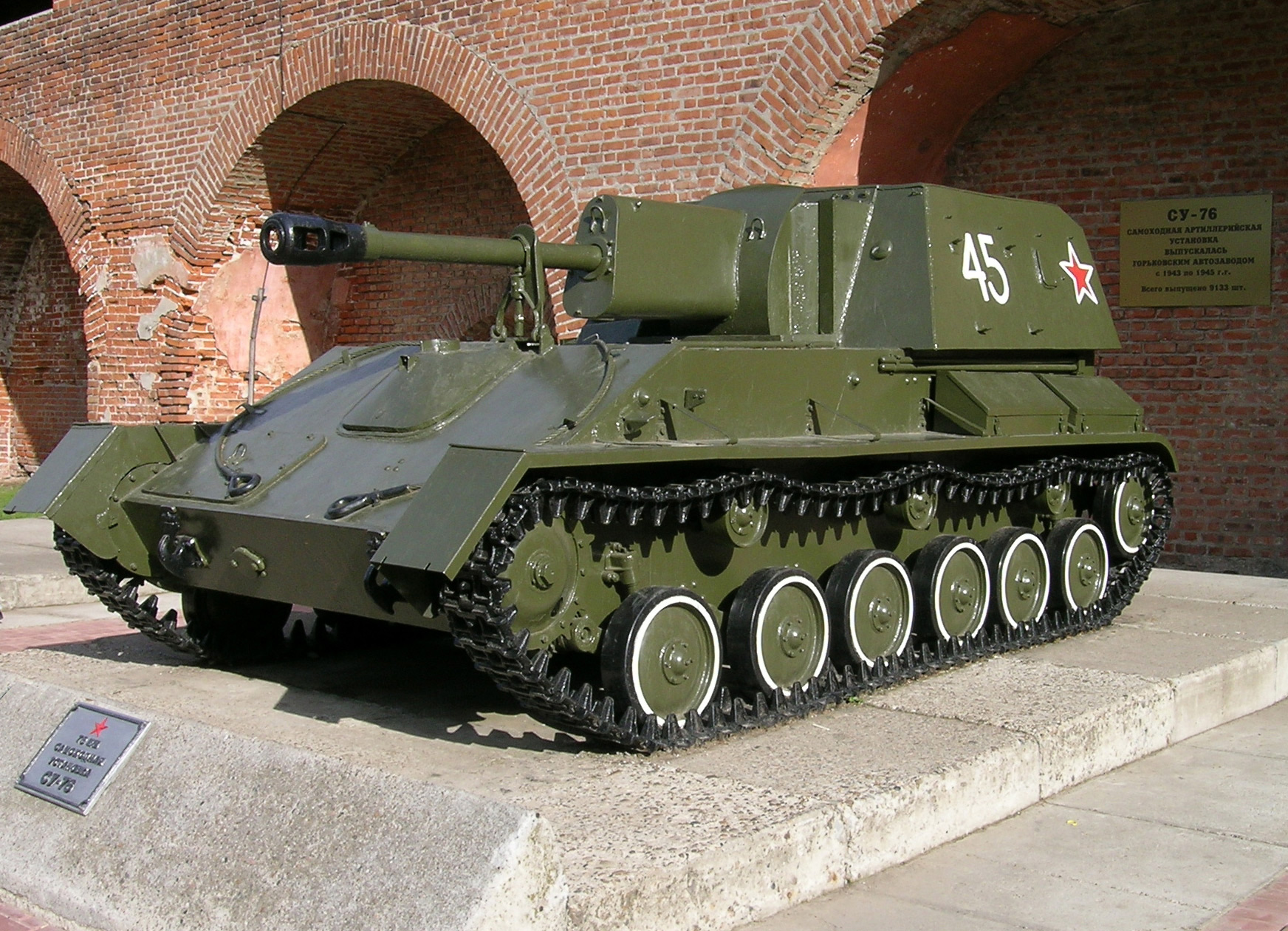
|
|
|
|
Watching World War Wednesday the game looks good. Fingers crossed they don't pull another stellaris. 1 week, 5 days.
|
|
|
|
Phi230 posted:Watching World War Wednesday the game looks good. Fingers crossed they don't pull another stellaris. Make a game that's very good but flawed due to bugs and some poor decisions, and yet are already fast at work on patches improving it dramatically, the first of which hit beta today? I don't know, that's not exactly the worst thing to wish against.
|
|
|
|
Phi230 posted:Watching World War Wednesday the game looks good. Fingers crossed they don't pull another stellaris. agreed. I can't wait to try out some of that co-op
|
|
|
|
Enjoy posted:Yeah they are self-propelled guns with lots of armour. Gun being another name for a big cannon. They are basically tanks without rotating turrets. I know, I was making a joke. For further reading, please refer to my other poorly-made jokes on previous pages, generally mentioning StuG IIIs. Speaking of StuG IIIs, jesus what a shithouse tank in Warthunder. You think it would be pretty good since its low to the ground, but you'd be wrong. ---- Edit: Instead of double-posting, I will edit my post. Continued work on the modern leader heads: 
ExtraNoise fucked around with this message at 07:28 on May 27, 2016 |
|
|
|
TheFluff posted:Snip This post is awesome. Wished I could add the S-tank to Hoi4  ExtraNoise posted:Edit: Instead of double-posting, I will edit my post. Continued work on the modern leader heads: Where is Göran Persson or Ingvar Carlsson? Or even more importantly Olof Palme? Groogy fucked around with this message at 07:48 on May 27, 2016 |
|
|
|
Whether or not the StuG III is represented in-game as an assault gun or tank destroyer is of little importance. What IS important is ensuring that the StuG can be decorated appropriately:
|
|
|
|
ExtraNoise posted:I know, I was making a joke. For further reading, please refer to my other poorly-made jokes on previous pages, generally mentioning StuG IIIs. Kim Campbell, whyyyyyyy.
|
|
|
|
Groogy posted:This post is awesome. Wished I could add the S-tank to Hoi4  You have selected Sweden. Did you mean: Denmark WilliamAnderson posted:Kim Campbell, whyyyyyyy. Planning for the mod to start on 1 July 1993. Groogy posted:I grew up in Sweden and these prime ministers are from long before I was born so I only know the ones Swedish grown ups talked about jesus i feel old. ExtraNoise fucked around with this message at 08:00 on May 27, 2016 |
|
|
|
I grew up in Sweden and these prime ministers are from long before I was born so I only know the ones Swedish grown ups talked about Dat Göran though <3
|
|
|
|

|
| # ? May 11, 2024 13:37 |
|
ExtraNoise posted:I know, I was making a joke. For further reading, please refer to my other poorly-made jokes on previous pages, generally mentioning StuG IIIs. You have to do Hawke and Keating as well now   edit - ExtraNoise posted:
No Hawke then. V for Vegas fucked around with this message at 08:02 on May 27, 2016 |
|
|







